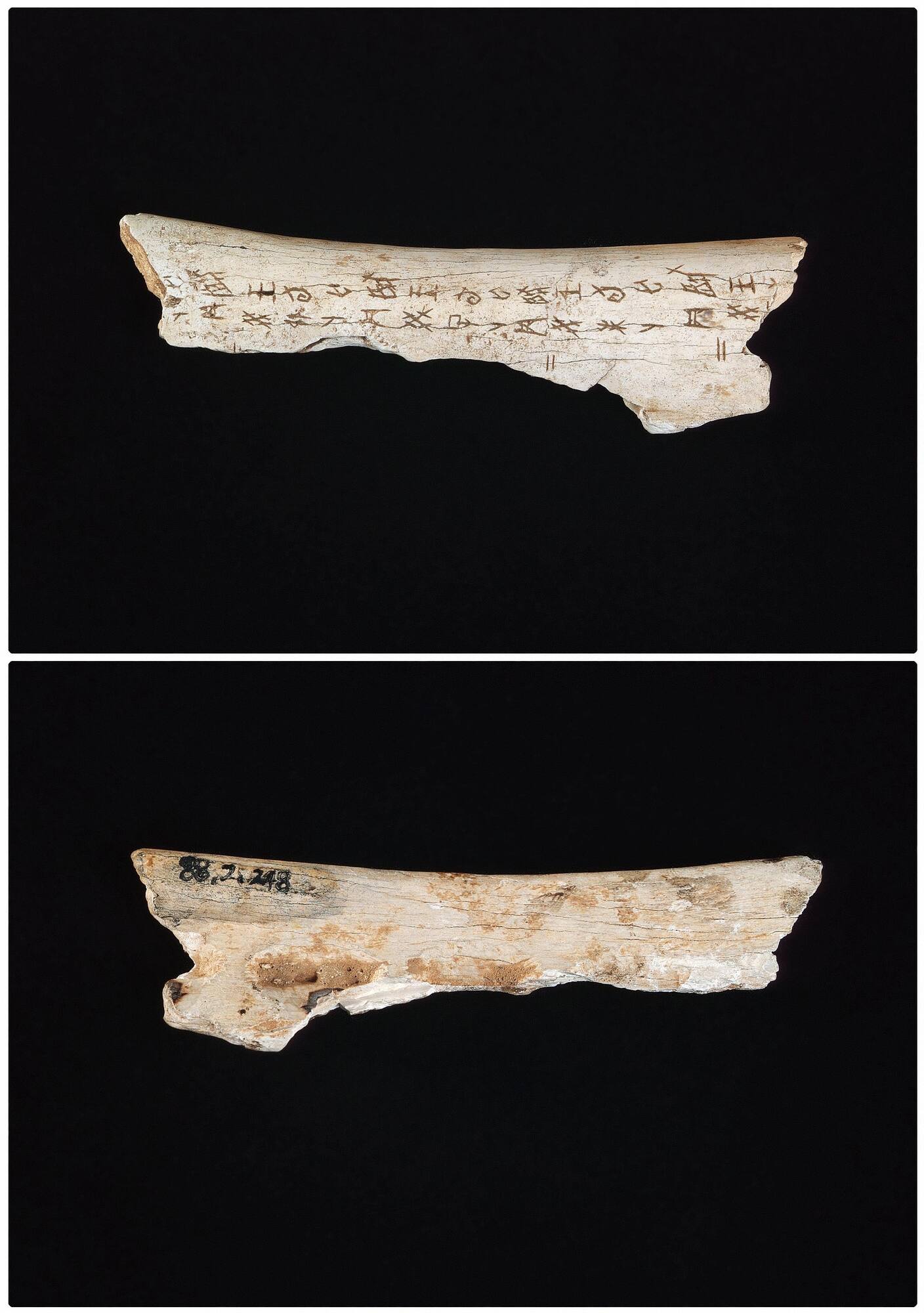
Object Details
Culture
China
Date
Shang dynasty, ca. 1200–1045 BC
Medium
Ox bone, carving, and burn marks
Dimensions
3 7/8 x 1 1/8 inches (9.8 x 2.9 cm)
Credit Line
George and Mary Rockwell Collection
Object
Number
88.002.248
WHERE WAS IT MADE?Shang dynasty oracle bones were found near the capital Yin, near modern Anyang, He(…)
WHERE WAS IT MADE?Shang dynasty oracle bones were found near the capital Yin, near modern Anyang, Henan province. Farmers had been unearthing oracle bones for many centuries but usually reburied them. In the nineteenth century local people believed them to be dragon bones that had the power to cure diseases, so unearthed bones were ground up and ingested as medicine. In the late nineteenth century some Chinese scholars saw the bones and recognized their historical importance, a discovery that eventually led to the scientific excavation of the Shang dynasty royal tombs.HOW WAS IT USED?Oracle bones served as an important tool of shamanism, and were used in divination on behalf of the Shang dynasty rulers. These bones contain the earliest surviving examples of Chinese writing. Typically the phrases on oracle bones record the answers to questions asked to the spirits of ancestors and to the god Shang Di about what would happen in the future, such as predicting whether or not a harvest would be good, whether a military campaign would be successful, whether a son would be born to the king, etc. They also often contain the names of Shang kings and their lineages, and sometimes the names of shamans. Shamans performed the divination by poking the bone with a hot metal rod that would cause cracks and fissures to form. They would then “read” the cracks to divine the answers.












